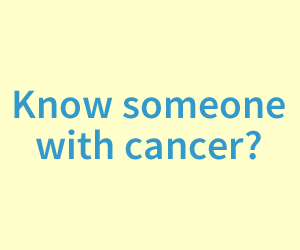Anti-PD1 Immunotherapy in Lung Cancer: Video and Summary
This is an excellent video explaining immunotherapy in lung cancer, primarily focusing on anti-PD1.
This video was published November 4, 2014 by Global Resource for Advancing Cancer Education (GRACE).
Dr. Jack West (Swedish Cancer Center, Seattle) moderates this discussion with Dr. Julie Brahmer (John Hopkins, Baltimore) and Dr. Ben Creelan (Moffitt Cancer Center, Tampa).
A summary of the video:
How do checkpoint blockade treatments work?
The body controls the immune system through checkpoint pathways to prevent an autoimmune attack or an over reaction by the immune system. Tumors use this mechanism to shield itself.
When the checkpoint pathway is blocked, the tumors' shields are removed and the immune system is unleashed against the tumors.
What is the response rate with checkpoint blockade?
Checkpoint blockade is the most exciting thing in the last 10 years. Over the four different PD1 inhibitors made by different companies, there is a 20% response rate in lung cancer. Checkpoint blockades lead to durable responses that go on for years, not the transient response that we see with tyrosine kinase inhibitors or chemotherapy.
What is the difference between PD1 and PDL1? Is there a difference in how they work?
Anti-PD1 is an antibody that binds PD1. When anti-PD1 binds the PD1 receptor on T cells it blocks the PD1 pathway. [T cells = soldier cells that kill cancer and infected cells]
Anti-PDL1 is an antibody that recognises PDL1 ("L" stands for ligand). When anti-PDL1 binds PDL1 on the tumor or other cells, it blocks the PD1 pathway.
There may be slight differences in the toxicity and response of these two antibodies, but we see the same postive response when lung cancer patients are treated with either of them.
What patient does anti-PD1 work in? Who makes up the 20% who responded to anti-PD1?
Clinical trials are investigating whether patients with tumors expressing PDL1 respond better to anti-PD1 treatment. The data so far seems to suggest that positive response to anti-PD1 is correlated with tumors expressing PDL1. However, patients with tumors that do not express PDL1 also responded positively to anti-PD1.
The testing for PDL1 on tumors is not a standardized test, it is usually tested only in the context of the clinical trials.
The significance of PDL1 expression for efficacy is not clear. In one trial, PDL1 expression was tested in tumors from the time of initial diagnosis. However, at the time patients started the anti-PD1 trial, most of them had gone through many treatments, which may have changed the tumors' PDL1 expression.
What is the duration of response for anti-PD1, specifically Nivolumab?
The median duration of response is 74 weeks. Patients who are 1 year off treatment are still doing well, with tumors under control. Long term control is possible with this treatment.
How long should patients be kept on this therapy?
We don't know the optimal duration of treatment. But when the immune system achieves memory, even when treatment is stopped, the immune system will continue to control the cancer.
There are cases of kidney and colon cancer patients that were treated with checkpoint blockade, then were off treatment for 5 years, yet the disease has not come back.
What are the side effects and how tolerable are checkpoint blockade immunotherapy compared to chemo or targeted therapy?
People on anti-PD1 enjoy life more than people on active chemotherapy. It's much less toxicity compared to chemotherapy.
Side effects of checkpoint blockades can be unpredictable. You need to be highly suspicous and looking out for them.
Common side effects of checkpoint blockades include fatigue, rash, diarrhea. These are easily treated: rash with topical steroids, diarrhea with oral steroids.
Serious side effects include diarrhea that can develop into colitis (perforation of the gut), which needs to be treated early with steroids and stopping the checkpoint blockade. Autoimmune problems, such as pneumonitis (lung inflammation) or hepatitis. These are very rare.
Can you explain the concept of pseudoprogression?
Pseudoprogression is when a tumor measures larger on a scan, when in fact it is on it's way to shrinking. Two explanations for why this is common with immunotherapy treatment:
1) The tumor is being infiltrated by T cells that are attacking it. On a scan, it looks like the tumor has enlarged. But when that tumor is removed, it turns out there is no tumor left, but only infiltrating T cells which were there to kill the tumor.
2) The immunotherapy takes time to work. Tumors initially grow, then have a delayed positive response.
How do you explain new tumors that sometimes appear after immunotherapy, followed by shrinkage of all tumors?
1) Tumors that were microscopic become macroscopic as T cells infiltrate them and eventually kill them.
2) The tumor takes a while to respond to the T cells attacking it, that's why you see it growing larger first before shrinking.
The "new" tumors probably aren't new, they were just microscopic before the immunotherapy and we couldn't see it on the scan.
What is the time frame and criteria to determine if the checkpoint blockade is working?
It takes time for a positive response with checkpoint blockade. This is very different compared to chemo, where responses are quick.
Example 1: 50% of the patients respond by 8-9 weeks. Some even respond up to 6 months later.
Example 2: Positive response occurs 12 weeks after treatment. Tumor then keeps on shrinking over time.
What is key:
End of Summary.
If you have questions about cancer immunotherapy or anti-PD1, write us below in the comment box, and we'll get back to you.



